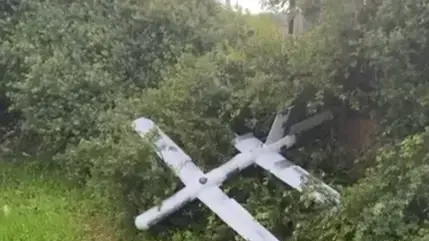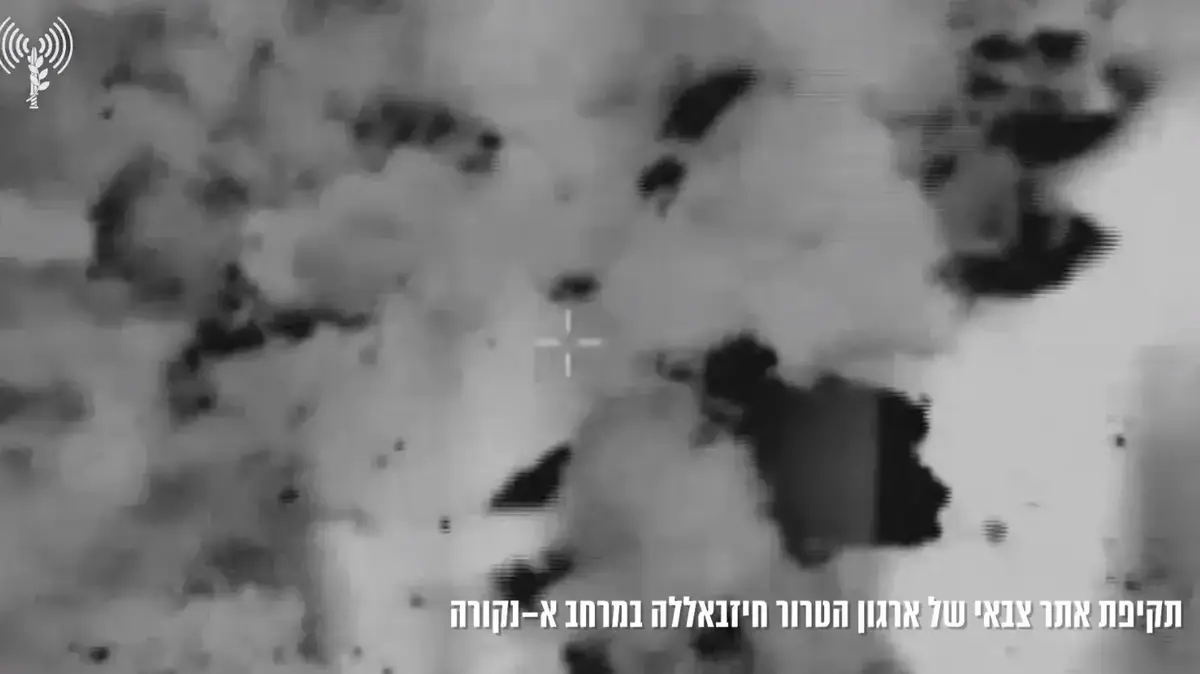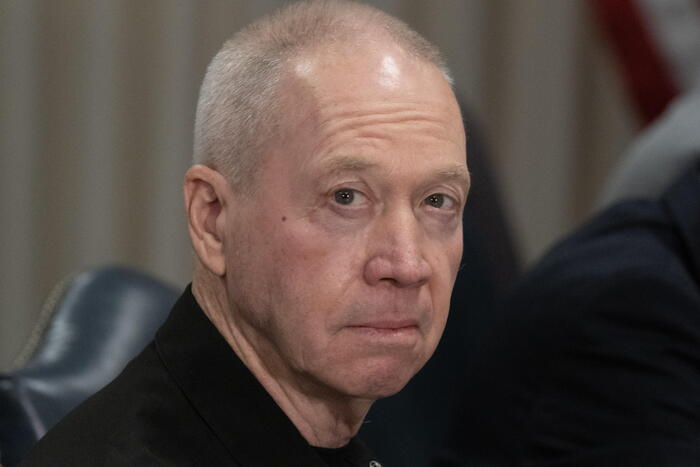"Hezbollah controls southern Lebanon, and especially the border area with Israel, like in the palm of its hand," said a former intelligence official.
"If a Palestinian, who does not know the area very well, crosses a village in southern Lebanon and his vehicle hears love songs loudly - in a short time Hezbollah's field commanders will know about it. This is intimate control based on the extreme support of the organization's loyalists and any anomaly in the area is quickly reported."
That is why the same former senior official and other senior officials in the security establishment estimate that even if a Palestinian force was responsible for introducing the terrorist from the attack at the Megiddo Junction, the terrorist organization was still involved.
A very senior member of the security system, he said to Walla!
Because the incident at the Megiddo junction takes him back 21 years, to March 12, 2002, when two Palestinian terrorists crossed the border from Lebanon near Kibbutz Mitzvah, and murdered six Israelis.
An investigation by the Mossad and AMN revealed that it was Hezbollah's "Unit 1800" that recruited and activated the terrorists. The unit was commanded by Hajj Khalil Kharab, who moved between the worlds of crime, with an emphasis on drug and weapons trafficking, and the promotion of terrorist activities with the help of Recruiting Palestinian agents for attacks.
After the Second Lebanon War, intelligence accumulated that at the top of Hezbollah it was decided to dismantle Unit 1800 and rebuild it under the code name "Unit 133", and to appoint as commander Muhammad Ataya, the deputy of Hajj Khalil Kharab who was elegantly moved aside. Foreign intelligence sources estimated at the time that the leader of the terrorist organization, Hassan Nasrallah, decided that the unit's powers to recruit and deploy terrorist agents would be extended to Turkey and Europe,
The attack at the Megiddo junction: all the details about the serious security affair (Walla system!)
Years passed, and as the expectations grew, so did the disappointments in the Shiite organization - Unit 133 did not meet the goals set for it, among other things thanks to the correct compliance of the Israeli intelligence and the protection of the IDF at the border. In the area of 2012, the operation of drug dealers from Nazareth and the village of Reger on the Lebanese border was revealed , who smuggled in sports bags 10 kg of advanced and high-quality explosives, the likes of which do not exist in the territories.
To this day, the question remains a mystery - who were the explosives intended for?
It is estimated that for "dormant cells" in Israel that were preparing for action according to an order from Beirut.
As the years went by, Kharab's name rose more and more in the Lebanese-Israeli space until his return to the front of the stage in 2021. Then security officials confirmed that the terrorist, who is also wanted by the Americans, hangs very close to the decision-making table at the top of the Shia in the Land of the Cedars, and not only pulls strings of Unit 133. It can be estimated that his return lies in his extensive relationship with the families of drug and arms dealers among Israeli Arabs, whom he has known for decades from the various drug deals he managed.
"Every infiltration and smuggling axis built between Lebanon and Israel is based on a criminal axis, and only then is it also used for hostile sabotage activity, so if you want to gain control - you need to bring people who understand both areas into the picture. Therefore, in my opinion, to increase control on the Israeli side, a figure comes into the picture Like Kharb. Such a story of infiltration from one side to the other including an idea to return the infiltrator is based solely on control on both sides," the former senior official explained.
"It would be very intriguing to know who drove the terrorist from the Lebanese border area to the Megiddo junction. I would not be surprised if he received help from drug dealers and weapons on the Israeli side."
Flags of Hezbollah, Lebanon and the Palestinian Authority (Photo: Flash 90, Eyal Margolin)
Meanwhile, in recent times the Galilee formation, under the command of Brigadier General Shay Klaper, reported quite a few changes and increasing tension in the border area. Fearing an incident on the border, and following intelligence that was piled up on the top desk of the IDF General Staff, it was decided to increase vigilance in the area.
A senior security official explained that had it not been for vigilance in the area, a decision would not have been made to block the roads back to the border.
According to him, the quality of the explosive that exploded at the Megiddo intersection, and the fact that its style does not fit the area, led to the quick decision.
Meanwhile, Israel does not unequivocally state that Hezbollah is solely responsible for the introduction of the terrorist and the attack at the Megiddo Junction.
According to estimates, there is a possibility that Hamas is also involved in the operation, and provided assistance to Hezbollah on the Israeli side.
Therefore, the whole affair is being investigated under a combined effort of the IDF, the Shin Bet, the police and the Mossad.
A senior security official said after the attack that "there has been a connection between the two arenas for some time. Nasrallah talks about it, while Lebanon has weakened he feels more confident to act. He is deterred by war but feels he can take risks. Nasrallah is only behind the operation if he thought they would not connect this to him."
"We also feel more secure with the Palestinians in Lebanon," continued the senior security official.
"Khaled Mashaal and Salah al-Aruri are walking around there like the kings of the land. Just recently Mashaal said that the 'resistance' will attack Israel from all directions. The goal of Hamas is to create a multi-purpose force."
This is a growing challenge for the IDF on the Lebanese border, especially when the rate of construction of the barrier is not satisfactory and the Israeli government has not yet transferred the budget required to build the fence and place the sensors in the complex areas of the border.
"Ready to risk more."
Nasrallah (Photo: Reuters)
The changes in the Lebanese arena necessitate a deepening of the political-security issue in Lebanon, especially among the 200,000 Palestinians living in the Land of the Cedars, most of whom live in ten refugee camps from Tripoli in the north, through Beirut, Tyre, Sidon and the Lebanon Valley on the way to Syria.
Although in terms of numbers the Fatah activists in Lebanon are more numerous, Hamas is defined as a more dominant organization from a military, political and political point of view according to its ties with the top of Hezbollah.
The senior Hamas representative in Lebanon on paper is Jihad Taha, who manages the current relationship with the Lebanese government and the various organizations.
However, the one with the greatest influence is the deputy head of the political bureau in Hamas, Saleh al-Aruri, who often deals with military matters, and therefore has recently been found a lot on the Lebanon-Iran axis.
Senior Hamas officials are prominent in the Lebanese landscape, and the terrorist organization's senior delegation is responsible for promoting the building of the power and activity of two new elite units - "Shimali" and "Khaled Ali".
The units are engaged in commando activity, research and development of weapons and production of precision rockets.
Within the units there are special forces that have undergone training in Lebanon and Iran and specialize in sniping, sabotage, intelligence gathering, reconnaissance, anti-tank weapons, operating drones, electronic and cyber warfare, naval raids, and some claim that the use of surfboards for border crossing. It is estimated in Israel that there are hundreds of operatives who train in camps and training facilities in Lebanon.
According to the assessment of security sources, the lethal units of Hamas merge with the interests of the leader of Hezbollah, who since the summer of 2022 has been trying to increase the tension with Israel with the help of his speeches, and claims that friction with the IDF is increasing along the border with Israel. According to a senior security source, there is an estimate that The operatives of "Radwan Force", the elite fighters who returned from fighting in Syria to Lebanon, "are looking for action and that's why they came to the border of Israel - to heat up the area".
Hezbollah soldiers (Photo: Reuters)
More in Walla!
Contrary to the existential instinct: Netanyahu sees the danger - but fails to prevent it
A hateful inscription was sprayed on the house of Minister Levin's late father - during the swearing-in
A groundbreaking service in the field of saving lives;
Tens of thousands of people have already joined
The head of research at the "Alma Center for Israel's Security Challenges in the North", which specializes in analyzing open intelligence on Hezbollah, Tal Barry, told Walla!
Recently there has been an increasing presence of the Radwan force on the border.
"Hezbollah thinks it can afford it, no one is stopping it. This was even stronger during the negotiations on the maritime border," explained Barry.
"Nasrallah, with Iranian backing, has passed the point of no return - after he threatened, he realized that he would not go to war, but he has no problem taking calculated risks. Hezbollah is willing to take risks and gives the impression that even within the organization it is motivated to act."
Regarding the return of Hajj Khalil Kharab to the forefront of Hezbollah, especially due to his connections with the Palestinians in Lebanon and with the crime families in Israel, Barry said that "If Hezbollah is responsible for the operation in Megiddo - this is a tremendous success of Unit 133. The unit is the immediate suspect because it is responsible on the recruitment of assistants and deputies at the border".
According to Barry, who has been following the terrorist organizations in Lebanon for many years, Hezbollah nurtures Hamas in Lebanon through a civilian branch, apart from the military ties between the organizations.
"The person responsible for the civilian relationship on behalf of Hezbollah with the Palestinians, mainly at the field level, is Hassan Habballah who maintains regular contact with them. This is reflected in the resolution of conflicts between Fatah and Hamas, campaigns within the refugee camps of doctors, giving medicine, and actions to raise awareness of sanitation and cleanliness. The force The military of Hamas in Lebanon threatens Hezbollah's interests to a certain extent, such as rocket launches towards Israel in recent years, and therefore Hezbollah tries to keep all Palestinians close and at low fire."
news
Army and security
Tags
Hezbollah
Lebanon
Hassan Nasrallah











/cloudfront-eu-central-1.images.arcpublishing.com/prisa/KMEYMJKESBAZBE4MRBAM4TGHIQ.jpg)


